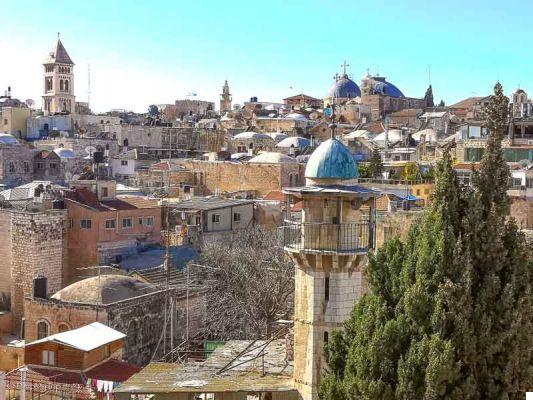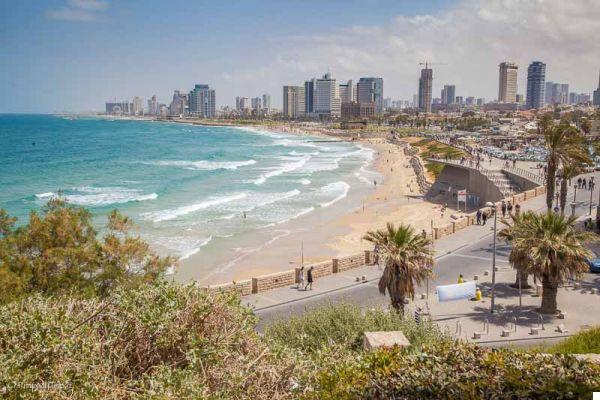Jerusalem, one of the most fiercely contested places on Earth, is home to many of the most important holy sites in Christianity, Islam and Judaism. The wealth of historical, religious and cultural monuments in the city is astonishing.
Now part of Israel, Jerusalem has been fought for millennia. At different times the Mamluks, Ottomans, Christians and Muslims all ruled, each leaving their own mark.
Walking through its ancient streets is a fascinating experience and pilgrims of all faiths who flock to the passages only add to the intoxicating atmosphere.
The city has a lot to offer not only to the more traditional tourists - the ones who do guided group tours and who invariably enjoy the most famous places to visit in Jerusalem; but also to a younger crowd looking for more alternative, innovative and out of the Jerusalem tourist attractions network.
Let's find out what to see in Jerusalem, the places not to be missed during a visit of a few days:
What to see in Jerusalem
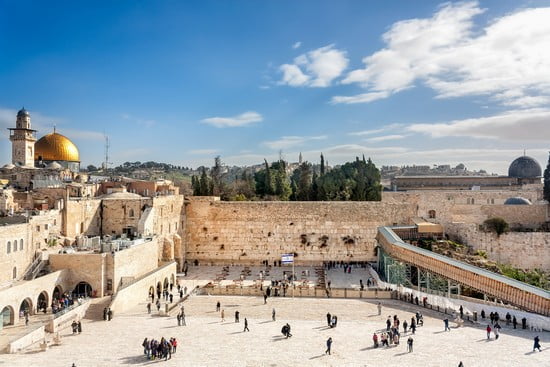
The number of religious tourist attractions here can be bewildering for first-time visitors, but luckily most of the main sights and things to do are tucked away in the narrow streets of the compact neighborhood of the city. Old City.
Despite its small size, the Old City probably contains more amazing sights than many countries do. The Dome of the Rock, the Church of the Holy Sepulcher and the Western Wall are just three of the places to visit.
Church of all nations
Located on the Mount of Olives overlooking Jerusalem, the Church of All Nations (officially called the basilica of the Agony) is an important historical site. It contains the rock on which Jesus is said to have prayed before he was arrested.
While the current church was consecrated in 1652, it actually sits on the foundations of two older churches, with the earliest dating to the XNUMXth century AD.
The church takes its name from the many different villages that have donated various mosaics and apses; each of their coats of arms can now be found among the religious designs and motifs on display.
Mount of Olives
Lying just outside the Old City, the Mount of Olives dominates Jerusalem. In addition to a lookout point, it is also a historical and religious site.
Overloaded with churches and seat of the oldest cemetery Used continuously around the world, the Mount of Olives is of particular interest to religious pilgrims traveling to Jerusalem, but even non-devotees can enjoy the spectacular views of the Old City from the top.
This sacred hill is believed to be the place where God will begin resurrecting the dead on the Day of Judgment. For Christian believers, this is also where Jesus ascended to heaven after his crucifixion and subsequent resurrection.
Citadel (Tower of David)
Known by some as the Jerusalem Citadel, the Tower of David offers some of the best views of the Old City and is a fascinating place to visit.
The Citadel actually has no connection with David, having been erected by King Herod to protect the palace he built around 24 BC After the conquest of the city by Titus in 70 AD, the Romans stationed a garrison here, but later the citadel fell into disrepair.
It was later rebuilt by the Crusaders, the Mamluks and the Turks of Egypt, during their years of reign on Jerusalem. The building you see now was built in the 14th century.
Located on the site is the Tower of David Museum, which offers an interesting glimpse into over 4000 years of Jerusalem's history through interactive exhibits, holograms and maps. While you're here, get on the roof to enjoy one of the best views of the old city. In the evening you can also see one show of sounds and lights.
The Western Wall
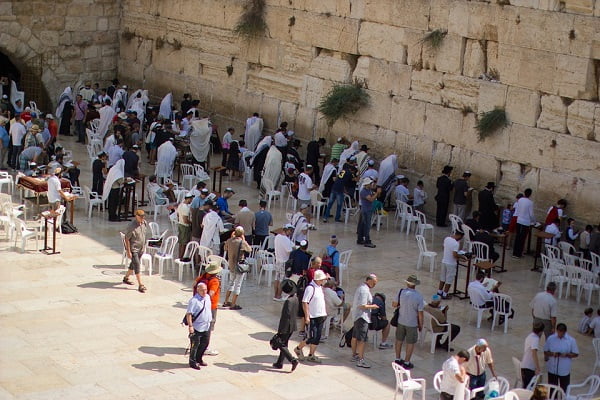
The Western Wall (or Western Wall ) is the surviving retaining wall of the First Temple in Jerusalem. Commonly called the Wailing Wall due to the cries of the people over the loss of the temple in 70 AD, it is now the holiest site in Judaism and has been a pilgrimage site for the Jewish people since the Ottoman era.
Not to be missed when in Jerusalem, visitors can stop at the worship areas and experience the intoxicating atmosphere for themselves. You can also write a prayer and stick it into the cracks between the stones of the huge white rock wall.
Painful way
Withholding the road along which Jesus walked during his crucifixion, the so-called "Way of Pain" is a historic road that crosses the Old City of Jerusalem.
Starting from the Lion's Gate, pilgrims and tourists can retrace the steps of Christ, ending in the Basilica of the Holy Sepulcher where it is believed that Jesus was crucified.
Via Dolorosa is marked with nine stations depicting various parts of his journey; there are five more in the church itself. Every Friday, there is a procession along the route. Participating will truly make you feel like you've stepped back in time.
Basilica of the Holy Sepulcher
For Christian pilgrims, the basilica of the Holy Sepulcher is the holiest place in Jerusalem and it is said to have been built on the spot where Jesus was crucified. The original church (built in 335 AD) was destroyed in 1009, and the large church you see now dates from the 11th century.
The interior of the church is a beautiful piece of religious architecture. This is the end point of the pilgrimage along the Painful way and the last five stations of the via crucis are inside the church of the Holy Sepulcher itself. The interior contains numerous religious relics and a bewildering conglomerate of over 30 chapels and places of worship, property of various Christian denominations.
Temple Mount
Follow in the footsteps of centuries of pilgrims and enter one of the holiest shrines on earth. Celebrated by Jews, Christians and Muslims, this is where Abraham (father of all three monotheistic faiths) is said to have offered his son as a sacrifice to God, where Solomon built the First Temple for the Ark of the Covenant, and where the Prophet Muhammad is said to have ascended to heaven during his early years of preaching to Islam.
It is a place of profound significance for the faithful. The large square, above the Old City, is centered around the glittering Dome of the Rock, which is the most iconic landmark of Jerusalem.
Under the golden dome is the sacred stone, believed to be the place where Abraham offered his son to God and also from where the Prophet Mohammed began his journey to heaven. The southern side of the mountain hosts the Al-Aqsa Mosque, which is said to be one of the oldest mosques in the world.
Dome of the Rock
Built between 688 and 691, the Dome of the Rock is one of the oldest sites of Islamic architecture. World Heritage Site by UNESCO, located on the edge of the Old City, on top of the Temple Mount, this place is considered one of the most distinctive monuments of Jerusalem. A masterpiece of Islamic architecture, this shrine is the place where Muhammad ascended to heaven.
While only Muslims are allowed inside, the outside of the Dome is spectacular to see. Bright blue mosaics cover the walls and the iconic gold-plated dome sits atop, overlooking Jerusalem.
Yad vashem
A moving and exciting place, visiting Yad Vashem is a must when in Jerusalem. And the official memorial of Israel to those who were brutally murdered during the Holocaust.
Nestled on the slopes of Mount Herzl, Yad Vashem's 18-hectare campus includes indoor museums and outdoor monuments, exhibitions, memorial sites, gardens, sculptures, and world-renowned research and education centers, all dedicated to the preservation of the memory of the Holocaust.
Jaffa Gate
This delightful stone portal is located in the impressive walls of Jerusalem and is one of the main entrances to the Old Town. Its distinctive L shape helped defenders protect the gate.
Dating back to 1538, the Jaffa Gate opens onto the Christian Quarter on one side and the Armenian Quarter on the other, and you'll find a steady stream of pedestrians pouring under its ancient arch.
Christian quarter
The Christian quarter of the old City runs north from Jaffa Gate and is centered around the church of the Holy Sepulcher. Within this tangle of alleys are some of the most famous tourist souks in the old city and numerous churches that are worth exploring.
You can visit the church Protestant of Christ, Ethiopian monastery, la Lutheran church of the Redeemer (from the bell tower you can enjoy incredible views of the Old Town), the Church of San Giovanni Battista, the oldest church in Jerusalem.
Jewish quarter
Although part of the Jewish quarter was bombed and destroyed during the Arab-Israeli war of 1948, much of it was rebuilt, giving it a new look compared to many other parts of the city.
This is not to say that there aren't many historical and religious sites: the Western Wall and Synagogue Hurva, among other notable attractions.
Wandering around the Jewish quarter is a pleasant way to spend some time and visitors should definitely make sure to head to the atmospheric Cardo shopping street, built in Roman times.
Damascus Gate
Located within the northwestern city walls, the Damascus Gate is one of the main entrances and one of the most renowned architectural beauties of the Old City of Jerusalem.
Built by the Ottoman Emperor Suleiman the Magnificent in 1542, its entrance is flanked on both sides by imposing stone towers. Entering the Old City from the Damascus Gate you will immediately find the traditional Arab bazaar which will lead you to the Muslim Quarter.
Muslim quarter
The most animated and lively district is the Muslim quarter, which is home to the best souk shops in the old City. This district flows approximately from the Damascus Gate through the northeast block of the Old Town. Numerous fine remnants of Mamluk architecture line the streets, including the Khan al-Sultan (via Bab al-Silsila), where you can climb up to the roof for excellent views. Going along Antonia Street, it comes to the beautiful church of Sant'Anna built by the Crusaders and to the Bethesda pool next to.
Western Wall Tunnel
Jerusalem's long and tumultuous history has seen the city destroyed and rebuilt numerous times, meaning that much of it is built on and off the rubble and building ruins that existed before.
For this reason numerous galleries wind their way under the old town. A guided tour of the Western Wall tunnels offers visitors the chance to return to the time of the second temple and explore a stretch of this fascinating underworld.
Running adjacent to the Western Wall, the tunnels are narrow and a bit claustrophobic, but worth a visit for the wealth of history on display.
City of David
A heady fusion of colors, scents and sounds, Mahane Yehuda is the largest and oldest market in Jerusalem. Offering an authentic glimpse into life in the Holy City, the market has numerous sections; some alleys are home to butchers, while others are home to clothes and coffee vendors. Merchants sell everything from fresh produce to clothing.
In recent years, Mahane Yehuda has also become a bohemian hangout, with designer boutiques and gourmet restaurants run by top chefs.
Could it be interesting for you
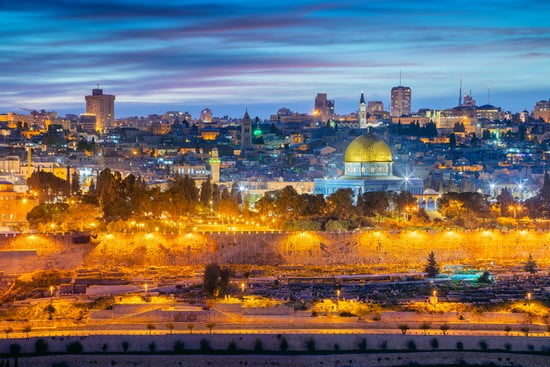
The Cedro Valley is located between the Mount of Olives and Mount zion and it is one of the oldest areas of Jerusalem. Both Jews and Muslims believe that the Last Judgment will take place here.
Archaeological excavations here have uncovered a settlement that dates back more than 4.000 years. The archaeological site is known as the city of David, and the archaeologists are still working.
L’area G is the oldest part of the site, dating back to the XNUMXth century BC. Among the rubble and rocks, there are two ancient stone tunnels that you can walk through. Adventurous travelers will love the tunnel di Hezekial, which was once an aquifer. The water sometimes rises up to the knees while walking in the dark with a flashlight in hand.
Israel Museum
Opened in 1965, this museum complex is the only place in the country that collects and displays both archaeological finds and works of art. The building of the Shrine of the Book shows part of the Dead Sea Scrolls (the rest of the scrolls are exhibited in the Citadel Hill museum in Amman, in Jordan), which were found in the Dead Sea area in the 40s.
Wandering around the archaeological galleries, you will find a wide range of artifacts discovered in the region, and objects from the Islamic world, the Near East, Greece. The famous Dead Sea Scrolls are just one of the highlights; looking at ancient biblical manuscripts is an awe-inspiring experience.
Jewish art and the life wing of the museum are equally interesting to visit. Here you can learn a lot about Jewish culture and traditions such as wedding and funeral practices.
Mahane Yehuda Market
A heady fusion of colors, scents and sounds, Mahane Yehuda is the largest and oldest market in Jerusalem. Offering an authentic glimpse into life in the Holy City, the market has numerous sections; some alleys are home to butchers, while others are home to clothes and coffee vendors. Merchants sell everything from fresh produce to clothing.
In recent years, Mahane Yehuda has also become a bohemian hangout, with designer boutiques and gourmet restaurants run by top chefs.
Could it be interesting for you






